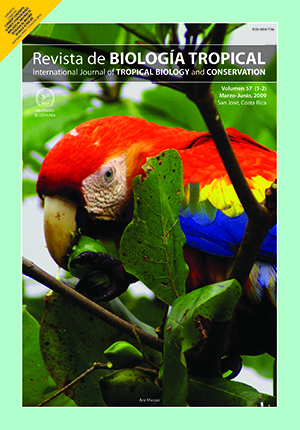Abstract
The fungus Leptolegnia chapmanii is highly pathogenic to mosquito larvae in Argentina. We studied if physical and chemical charac- teristics of the water from mosquito breeding sites affect pathogenicity, and the infectivity of zoospores of L. chapmanii. Water samples were taken from pools filled by rains, urban ditches with domestic waste water, pools filled by overflow from Río de la Plata, and flower vases from the Cemetery of La Plata city. Sub-samples of water were analyzed for physical and chemical characteristics, while other sub-samples were used for laboratory bioassays. Containers with 150 ml of water samples, 25 Aedes aegypti larvae, and 2.8 x 105 zoospores of L. chapmanii, were incubated under controlled environment, and larval mortality was recorded after 48 h. There were highly significant differences among mortalities in water from cemetery vases (70.2%), rain pools water (99.5%), and pools with water from Rio de la Plata (95%). There were no significant differences among larval mortalities in water from ditches, rain pools and Río de la Plata pools. Leptolegnia chapmanii was successful as a biological control agent in all kinds of tested water qualities, producing high larval mortality.##plugins.facebook.comentarios##

This work is licensed under a Creative Commons Attribution 4.0 International License.
Copyright (c) 2009 Revista de Biología Tropical
Downloads
Download data is not yet available.






